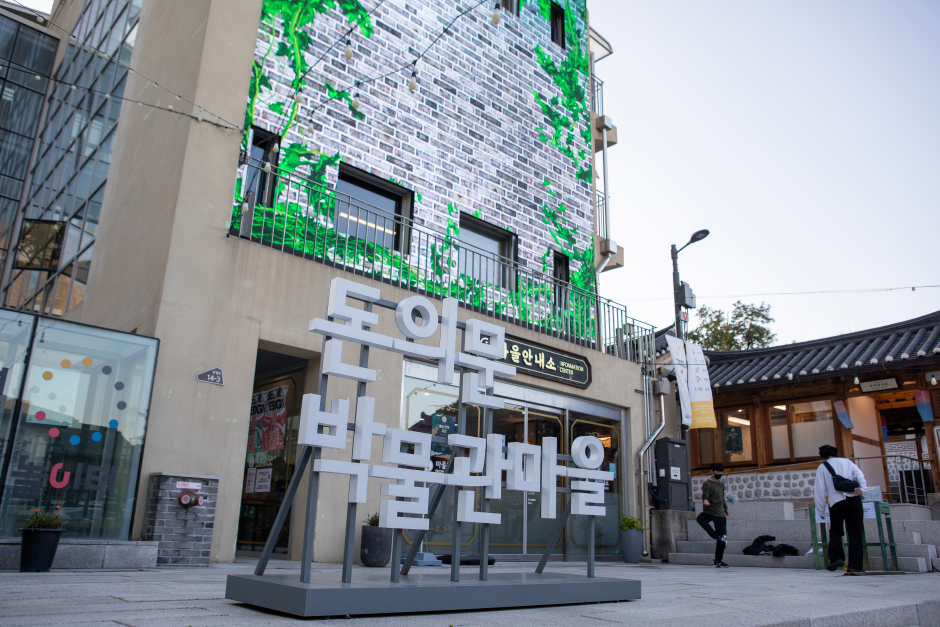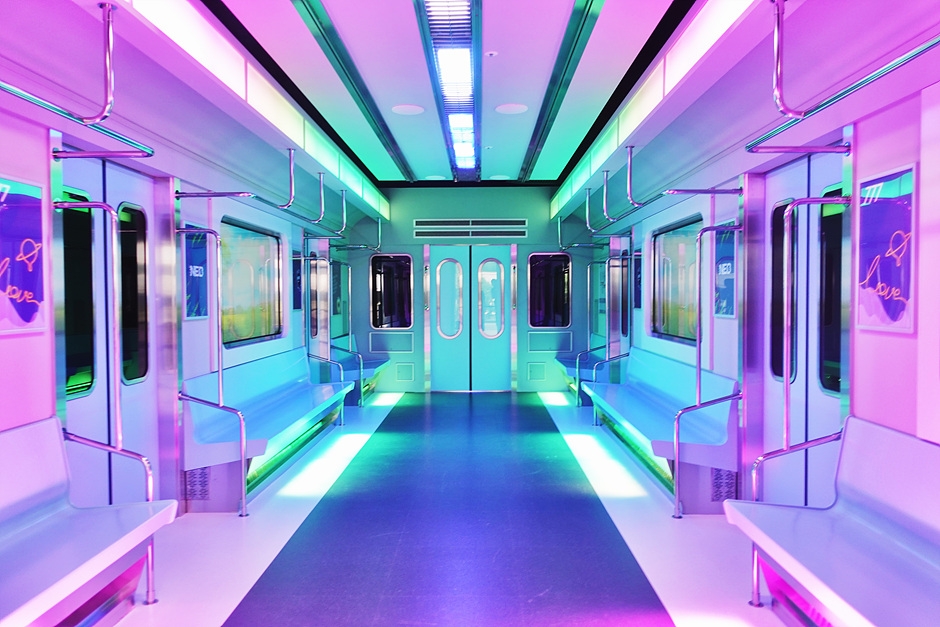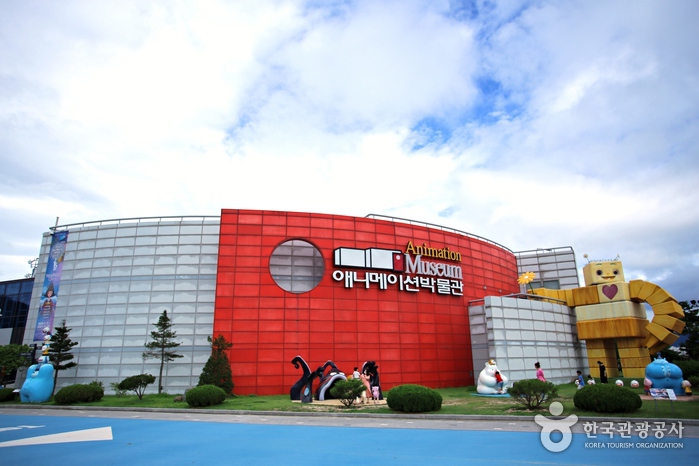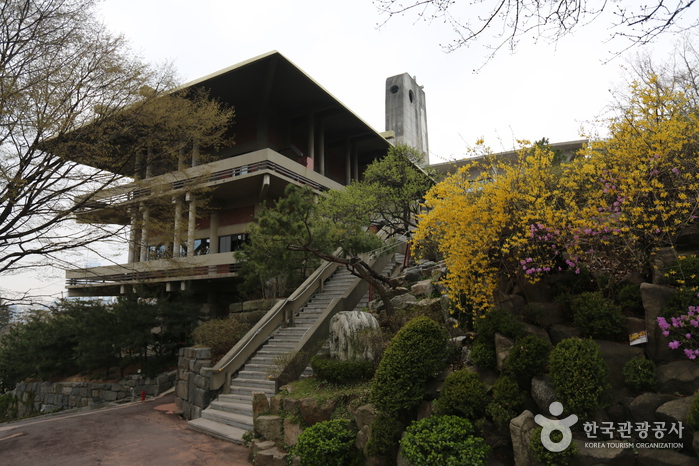Donuimun Museum Village (돈의문박물관마을)
2024-07-22
14-3 Songwol-gil, Jongno-gu, Seoul
Donuimun Museum Village is a historical and cultural space situated in the city center reborn through Seoul-style urban generation while still maintaining its historical value as the first village within the western gate of Hanyangdoseong as well as the lives and memories from the city's modern and contemporary era.
Together with the neighboring area surrounding Gyonam-dong, Jongno-gu, Donuimun Museum Village was selected for inclusion in the "Donuimun New Town" in 2003 for which all of the existing buildings were to be torn down to construct a neighborhood park. But the city of Seoul had another plan in mind; it wanted to maintain this small village, where the old lives and memories are still well-preserved, as a village museum to not only spread the historical significance of Saemunan Village, the first neighborhood within the western gate of Hanyangdoseong (the Seoul City Wall) but also establish the village as a historical and cultural asset for all Seoul citizens. The village was remodeled while keeping the buildings as untouched as possible and, in a few sites where houses had been torn down, broad yards were created. As a result, the warm and affectionate appearance of the village including modern structures, urban-style hanok, and streets with 100 years of history still remain today in their original places to be reborn as a place of new culture enjoyed and experienced by citizens.
Today, Donuimun Museum Village welcomes visitors with a new concept, "100 Years of Seoul, Time Travel Playground in the City." The village has undergone a significant overhaul to fill itself with "participation-style" spaces and contents where exhibits, experience sessions, performances, and marketplaces are held year-round while keeping 40 or so existing buildings intact in order to solidify its identity as a "living museum village," which is the original intention behind the village's creation.
HiKR Ground (하이커 그라운드)
2025-10-29
40 Cheonggyecheon-ro, Jung-gu, Seoul
Located inside the Korea Tourism Organization Seoul Center, HiKR Ground is a Korean tourism publicity center where visitors can experience K-pop and view media art at the same time. The name "HiKR Ground" embodies the meaning that Korea (KR) will greet ("Hi") global tourists and become a playground. Notably, it provides Korean tourism content in multiple ways for the younger generation to enjoy. On the first floor, there is a space to enjoy various media arts through the large media screen HiKR Wall, where visitors can see "Landscape of the New City" by media artist Lee Lee-nam, and Korean tourism videos submitted by global hallyu fans. On the second floor, visitors can make their own K-pop music videos using the XR Live Studio. At the window facing the restored Cheonggyecheon Stream, there is a mesmerizing artwork called ''North Wall'' by installation artist Suh Do-ho. On the third and fourth floors, visitors can get immersed in Korean local tourism through various arts, experiences, and exhibitions.
Animation Museum & Toy Robot Studio (춘천 애니메이션박물관&토이로봇관)
2021-12-31
854, Baksa-ro, Chuncheon-si, Gangwon-do
+82-33-245-6470
Located at the Uiam lakeside, the Animation Museum, which is Korea’s only animation museum, has two floors. On the first floor there is the dimensional exhibition hall introducing the origin, birth, and development of the animation, the kinds of animation, and the Korean animation history, as well as the reproductions of a large robot Taekwon V, and the old comic store. The second floor consists of the world hall displaying the animation trend for each country, diverse animation experience activities, and a special exhibition hall. Visitors can experience making sound effects for an animated film using various tools and dubbing a famous animated film such as Run Honey, and Cloud Bread. The Toy Robot Studio, located next to the Animation Museum, provides various experience programs related to robots. Its interesting robot programs are Spider Robot, Mission Robot, Robot Avatar, Robot Dance, Drone Experience, and so on. Both the Animation Museum and the Toy Robot Studio are equipped with convenient facilities for visitors with the background of Uiamho Lake, such as a cafe and souvenir shop, which sells animation characters and toys. The outdoor space also displays cute animation characters on the lawn where children can play freely.
Korean Martyrs' Museum (한국천주교순교자박물관)
2023-01-03
6, Tojeong-ro, Mapo-gu, Seoul
+82-2-3142-4434
Korean Martyrs’ Museum was opened in October of 1967 as Jeoldusan Martyrs' Shrine, in memory of the Catholic martyrs who lost their lives during the Byeongin Persecution of 1866. The name of the museum changed to the current Korean Martyrs' Museum in August 2008. The museum displays artifacts and materials in exhibitions related to the Catholic Bishops' Conference of Korea.
National Memorial of Korean Provisional Government (국립대한민국임시정부기념관)
2023-01-16
279-24, Tongil-ro, Seodaemun-gu, Seoul
The National Memorial of Korean Provisional Government was established to shine a light on the proud history of the Korean Provisional Government's independence and the spirit of a democratic republic and to pass it on to future generations. The four-story memorial building with three underground floors houses three permanent exhibits, one special exhibit, Larchiveum, Symbol Plaza, storage, multi-purpose hall, and rooftop garden over a total area of 3,656 square meters, a total floor area of 9,703 square meters and a total exhibition space of 2,240 square meters. The permanent exhibits consist of a series of historic events from the March 1st Movement, which served as a turning point for the formation of the Provisional Government, to the foundation of the Korean Government that succeeded the mantle of the provisional government, while the special exhibit on the 1st floor currently hosts a special opening exhibition under the title of 『The Return of the Provisional Government of the Republic of Korea』. Moreover, a symbolic wall installation under the theme of "Waves of History" is displayed in the outdoor plaza on the 1st floor of the memorial expressing the Provisional Government’s desire for independence and the dynamics of the past, present, and future of Korea.
Ground Seesaw Seochon (그라운드시소 서촌)
2023-01-17
18-8, Jahamun-ro 6-gil, Jongno-gu, Seoul
Ground Seesaw is a cultural complex located in Seochon, Jongno presented by Media & Art, an exhibition production company, and designed by SoA, an architecture firm, and Loci Studio, a landscaping studio. Visitors are able to check out a variety of exhibits at Ground Seesaw Seochon.
ARTE Museum Valley Gangneung (아르떼뮤지엄 강릉)
2024-05-23
131 Nanseolheon-ro, Gangneung-si, Gangwon-do
ARTE Museum Valley Gangneung, located by Gyeongpo Lake, is the third immersive media art exhibition presented by d’strict, a digital media design company. There are twelve media art exhibitions centered on the theme “Valley” to reflect the regional characteristics of Gangwon State and Gangneung, the center of the Baekdu Mountain Range. The works produced under the theme of “Eternal Nature” have vibrant visuals, sensual sounds, and elegant fragrance adding to the entire experience.
KT&G Sangsangmadang (KT&G 상상마당 춘천)
2021-05-22
25, Sports town-gil 399beon-gil, Chuncheon-si, Gangwon-do
+82-33-818-3200
Embracing Uiamho Lake, KT&G Sangsangmadang Chuncheon is a cultural complex that consists of the Art Center and the Stay building. The Art Center was established by remodeling the previous Chuncheon Children’s Center, while the Stay building was built by remodeling the previous Gangwon-do Sports Center. With an open view of the lake at the front, the Art Center is known for its construction design by Korea’s master architect, late Kim Swoo-geun. When viewed from the sky, the Art Center, which was built with Kim’s unique construction technique, resembles a butterfly sitting on the lakeside. Opened as the Children’s Center in 1980, the building was abandoned for a while and then was re-born as KT&G Sangsangmadang Chuncheon in 2014. Sangsangmadang, as part of the social contribution and restoration program of KT&G, aims to support various cultural and arts activities and offer the public an opportunity to appreciate arts and culture. While keeping its original frame of the construction in consideration of its architectural value, KT&G Sangsangmadang Chuncheon provides diverse amenities such as a theater, gallery, cafe, art shop, and so on. It has also a charming outdoor space. It has an outdoor stage near Uiamho Lake, and the walking path and the bicycle path are available in front of the stage. In addition, the Forest Experience Center for Children behind the outdoor stage provides diverse interesting attractions.
Teddy Bear Farm (테디베어팜)
2021-04-05
16, Haksapyeong 2-gil, Sokcho-si, Gangwon-do
+82-33-636-3680
The Teddy Bear Farm introduces the history and origin of teddy bears and displays bear dolls with diverse themes as well as teddy bear works created by world-wide designers. The bear’s name “Teddy,” which is very popular among people of all ages, originates from the nickname of U.S. president Franklin Roosevelt. The Teddy Bear Farm introduces the birth story of teddy bear associated with President Roosevelt, and shows various styles of teddy bear dolls, in particular, miniature versions of teddy bears from the world’s fairy tales, teddy bear in hanbok (traditional Korean clothes), teddy bear at a camping site, teddy bear enjoying a Christmas party, and so on. It also displays Korea’s seasonal customs as well as a variety of teddy bears’ stories. The photo zones in places and the outdoor Teddy Garden invite many visitors with its interesting attractions.
Museum SAN (Meditation Hall) (뮤지엄SAN (명상관))
2025-10-23
260, Oak valley 2-gil, Wonju-si, Gangwon-do
+82-33-730-9000
Museum SAN (Space Art Nature), hidden in the mountain, was designed by Tadao Ando, a legendary architect known for his minimalistic exposed concrete buildings. The museum opened in May 2013 with the last works of James Turrel, known for his work within the light and space movement. The museum is spread out in a line starting at the trail at the Welcome Center, to the lawn parking lot to the Flower Garden, Water Garden, Main Building, Meditation Hall, Stone Garden, and James Turrell Hall. The four wing-shaped structure of the Main Building is designed using squares, triangles, and circles, reflecting the architect's philosophy of connecting land, sky, and humans. Additionally, the museum runs various experience and educational programs in addition to its permanent and special exhibitions.
Cafe Terrace in the Main Building is the ideal spot to take a rest while enjoying the 360-degree panoramic view of the mountain. At the Meditation Hall near the Stone Garden, you can relax your mind and body with the aroma and singing bowl sounds that fill the hall, while enjoying the beautiful scenery through the curved windows.





 English
English
 한국어
한국어 日本語
日本語 中文(简体)
中文(简体) Deutsch
Deutsch Français
Français Español
Español Русский
Русский